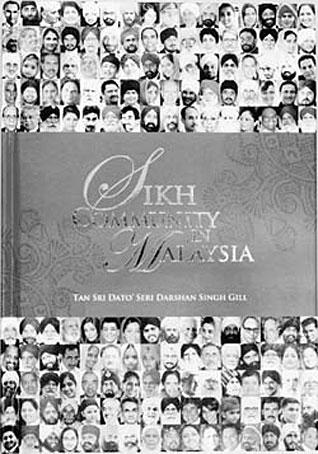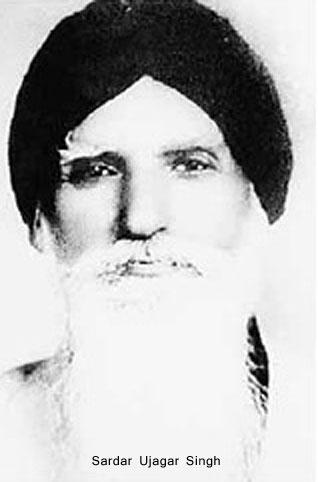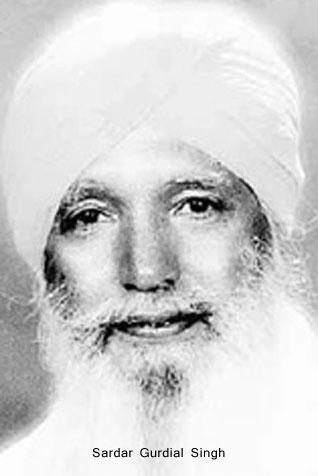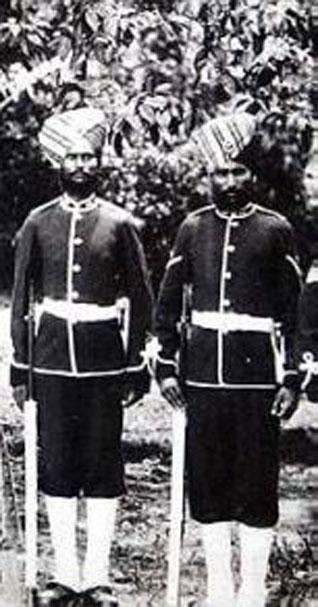
Image on homepage & thumbnail: A Sikh-Malaysian policeman walks past papier-mache horses being readied for a parade. 1930s.



Books
Blood, Sweat & Tears:
The Saga of Sikh-Malaysians
by BALAN MOSES
Jaevina Kaur may not know it, but she is the scion of a Sikh family that can trace its Malaysian roots back six generations, to the time of the Federated Malay States (FMS).
The bouncy 2-year-old has her great-great-great grandfather, Boor Singh Gill, to thank for planting her family in a land thousands of miles away from their native village of Kambo Daiwala in Punjab.
It has been a hard and sometimes tortuous journey through life for the family of the young man who travelled by ship across the Indian Ocean, to reach the land of milk and honey that he had heard of.
Boor Singh, who had left his wife behind in Punjab, in realizing that he had to carve a life for himself in his adopted home, started a cattle farm in Menglembu, Perak, with a few cows.
Malaysians may very well appreciate, as I do, that the turn of the 19th century was a far cry from today, with travel between countries taking weeks and fraught with danger from marauders and the vagaries of the weather.
But this did not put off Boor, who knew he had found what he had been looking for and wanted to share it with his family.
He brought his son, Ujagar Singh, over in 1911, who in turn called for his teenage son, Gurdial Singh, to join him. Both became granthis after a brief stint in the cattle and bullock cart business.
Today, Tan Sri Darshan Singh (fourth generation), Datuk Amarjit Singh (fifth generation) and Jaevina Kaur are the standard bearers of the proud Sikh tradition that Boor Singh brought to the FMS.
Their story is not unlike that of thousands of Sikh families from Punjab who came to the FMS, and later Malaya, to find their "pot of gold" in various professions.
They came and stayed, infusing a richness to the culture of the nation which they grew to call home.
None among us can deny the accomplishments of the tiny community (Sikhs number fewer than 100,000 of the 27 million people who call themselves Malaysians) of Singhs (lions) and Kaurs (princesses) over the past century or so.
Who among us does not know a Singh or a Kaur who has excelled in his or her chosen field of endeavour?
On the same token, I am sure we also know of Sikhs who have gone from success to success on a staple diet of hard work and commitment, despite starting from the most humble of backgrounds.
And this is what lawyer, community organiser and raconteur Darshan Singh set out to document a little more than two years ago when he filled the vacuum in terms of the documented history of Malaysian Sikhs and their story of triumph over hardship.
Last month, his magnum opus, The Sikh Community in Malaysia, was launched as a tribute to the blood (many of the early Sikhs who came over from India were soldiers and policemen), sweat (some were watchmen who worked night and day) and tears (of the pioneering Sikhs) in Malaysia.
The 266-page hardcover book (tagged at RM 89.90) is a veritable cornucopia of information about Sikhs from the Malaysia-Thai border to Johor Baru.
Divided into 10 chapters, the "golden treasury" delves into the varied history of the Sikhs from their origins, belief, identity and the gurdwara, to their culture, traditions, festivals and celebrations.
Along the way, he researched Sikh organisations, their role in public education and sports, besides highlighting public recognition given to Sikhs in Malaysia through awards and honours.
Finally, and perhaps most pointedly, he has given readers thumbnail sketches of the leading lights of the community stretching back three to four decades, a daunting task, given the many Sikhs who have made it to prominence.
The book holds nuggets that Malaysians should know, like the significance of the five "K's", the articles of faith worn by those who take on the vows of the Khalsa - kesh (unshorn hair), kangha (wooden comb), kara (iron bracelet), kirpan (sword), and kacchera (breeches).
There is also the interesting meaning to the word "gurdwara" (Sikh place of worship), which is essentially consists of two roots: gur (of the Guru or teacher) and dwara (doorway).
Did you know that it takes 48 hours for an uninterrupted and complete reading (by a relay of lay men and women) of the Sikh Scripture, the Guru Granth Sahib? Such a reading is known as the akhand paatth.
Sikh first names are also unisex, a rare practice around the world. On the other hand, women and men have independent identities with "separate but common" names for the two sexes - "Kaur" for women, "Singh" for men. Thus, a woman is uniquely not tied to the public identity of either a father or a husband - something that all other cultures practice.
Darshan's team included Amarjit, social anthropologist Dr Sarjit Singh Gill, lecturer Dr Harjit Singh Randhawa and numismatist/author Saran Singh Sidhu - a group driven by the urge to put Sikh history on paper for posterity.
Darshan, the president of the Malaysian National Sikhs Movement (GerakSikh) and project and editorial chairman of the support group's project, and his team, spent almost every weekend over the past two years to produce this exceptionally good read.
The biggest hurdle they faced was gathering photographs. But judging from the pictorial spread featured across the pages, they did not do a bad job.
Editorially, the book could have provided a little more documentary evidence of the history of the community, perhaps by talking to leading individuals who could have told their stories to good effect.
But that is perhaps waiting to be told in the next edition that Darshan and his friends put their heads to.
Sultan Azlan Shah of Perak had nothing but praise for the book in his foreword, in which he hoped that it would act "as a source of reference not only by the Sikh community for generations to come, but by a wider Malaysian audience, as well as the world at large."
"On the whole, they (Sikhs) form an integral part of our colourful social fabric," the ruler added, in elaborating on Sikh contributions to the various disciplines, especially medicine and law.
Prime Minister Datuk Seri Najib Razak, in his message, described the Sikhs as a community passionately driven and standing united, which has enabled them to stand tall.
His statement that the Sikh Community in Malaysia deserves a rightful place in the halls of learning by itself gives the book academic credentials that it rightly deserves.
This is further augmented by Emeritus Professor of Malaysian History, Tan Sri Dr Khoo Kay Kim, who remarked in his message that the book displayed an erudite knowledge for generations to come.
The book, supported by the Information, Communications and Culture Ministry, is being distributed by MPH Distributors Sdn Bhd.
 
[Courtesy: New Straits Times]
July 20, 2009


